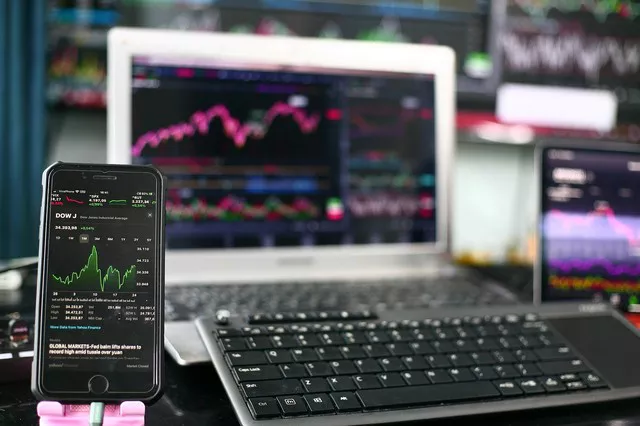Bond futures represent a vital component of the global financial markets, offering investors exposure to fixed-income securities while providing avenues for hedging interest rate risks and speculating on future interest rate movements. Trading bond futures entails navigating a complex landscape of market dynamics, contract specifications, trading strategies, and risk management techniques. This article aims to demystify the intricacies of bond futures trading, offering insights into the mechanics of trading, popular strategies employed by market participants, and the inherent risks associated with this asset class.
1. Understanding Bond Futures
Bond futures are standardized financial contracts that obligate the buyer to purchase, and the seller to deliver, a specified quantity of a particular bond at a predetermined price (the futures price) on a future date (the delivery or expiration date). Unlike trading individual bonds, which require substantial capital outlay and involve fixed coupon payments and maturity dates, bond futures provide investors with leverage and liquidity, enabling them to gain exposure to a diversified portfolio of bonds without the need for direct ownership.
2. Mechanics of Bond Futures Trading
Bond futures are traded on organized exchanges, such as the Chicago Mercantile Exchange (CME) or the Intercontinental Exchange (ICE), under the oversight of regulatory bodies. Each bond futures contract corresponds to a specific underlying bond or basket of bonds, with standardized contract specifications governing parameters such as maturity, coupon rate, notional value, and delivery terms. Trading hours, margin requirements, and settlement procedures vary depending on the exchange and the specific contract.
To initiate a bond futures trade, investors can take either a long (buy) or short (sell) position in the futures market. Long positions profit from an increase in bond prices (decrease in yields), while short positions profit from a decline in bond prices (increase in yields). Traders can enter and exit positions by executing buy or sell orders through their brokerage accounts, with trades cleared and settled through the exchange’s clearinghouse.
3. Factors Influencing Bond Futures Prices
Bond futures prices are influenced by a myriad of factors, including prevailing interest rates, monetary policy decisions, economic indicators, inflation expectations, and market sentiment. Changes in interest rates have a direct impact on bond prices and yields, with inverse relationships between bond prices and interest rates. Expectations regarding future interest rate movements, as reflected in yield curve dynamics and forward rate agreements, also shape bond futures prices. Economic data releases, such as GDP growth, employment reports, and inflation figures, provide insights into the health of the economy and influence market expectations for monetary policy adjustments, thereby impacting bond futures prices.
4. Trading Strategies for Bond Futures
Market participants employ various trading strategies to capitalize on opportunities in bond futures markets, depending on their investment objectives, risk tolerance, and market outlook. Some common strategies include:
Directional Trading: Long or short positions based on forecasts of interest rate movements or macro-economic trends.
Spread Trading: Exploiting price differentials between related bond futures contracts or yield curve segments.
Hedging: Using bond futures to hedge against interest rate risks in bond portfolios or to manage duration exposure.
Arbitrage: Exploiting price inefficiencies between bond futures and cash bond markets to capture risk-free profits.
Implementing these strategies requires a thorough understanding of market dynamics, risk management principles, and execution techniques. Traders often utilize technical analysis, fundamental analysis, and quantitative models to inform their trading decisions and optimize their trading strategies.
5. Risk Management in Bond Futures Trading
Bond futures trading involves inherent risks, including interest rate risk, credit risk, liquidity risk, and market volatility. Effective risk management is essential for preserving capital and achieving long-term profitability. Common risk management techniques employed by bond futures traders include:
Position Sizing: Limiting the size of positions relative to account equity to mitigate potential losses.
Stop Loss Orders: Setting predetermined price levels at which to exit losing positions to limit downside risk.
Diversification: Spreading exposure across multiple instruments, markets, and trading strategies to reduce concentration risk.
Stress Testing: Assessing the impact of adverse market scenarios on portfolio performance and adjusting risk exposures accordingly.
Continuous Monitoring: Monitoring market conditions, news events, and portfolio performance to identify emerging risks and adapt trading strategies accordingly.
By employing robust risk management practices, traders can mitigate the impact of adverse market movements and enhance the resilience of their trading operations.
Conclusion
Bond futures trading offers investors a diverse array of opportunities to gain exposure to fixed-income markets, hedge interest rate risks, and implement trading strategies based on market outlooks and economic trends. Understanding the mechanics of bond futures trading, factors influencing prices, popular trading strategies, and risk management techniques is essential for navigating this complex and dynamic asset class successfully. As with any investment endeavor, thorough research, disciplined execution, and prudent risk management are key to achieving sustainable returns and managing risks effectively in bond futures markets.

